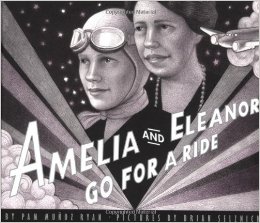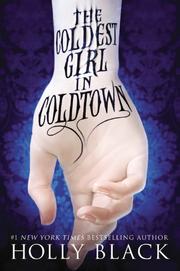O’Brien, T. (1990). The Things They Carried. New York: Penguin Group
Summary
The Things They Carried is a compilation of short stories named after the first story in the collection by the same name. All the stories focus around the experiences of Vietnam, both Tim O’brien’s experiences as well as experiences of those around him. He talks about the metaphorical things they are carried into the field and the weight that was put on the soldiers. He talks about the feelings that follow you home, the people that are left behind, as well as the struggle of living with the memories that follow. Many of the experiences are partly autobiographical with poetic liberties. The stories range in context from falling in love, leaving love, killing a man and the haunting memories. It touches on the differences in transition from war to civilian life. Above all, it shows such a strong range in human emotion in trying times and adverse conditions.
Impressions
I listened to this book on audiobook, narrated by Bryan Cranston. His narration was beautiful, touching, and full of spirit. I felt like having the words wash over me was the best way to experience this book. The language is the star of these short stories. O’brien has a beautiful melodic way of writing in which he paints the words as a picture. He especially employs the technique of repeating phrases to gather emphasis, such as in the short story The Man I Killed when he repeats “his jaw was in his throat, his upper lip and teeth were gone, his one eye was shut, his other eye was a star shaped hole.” He emphasizes how these thoughts would continue to creep into the mind of someone who has suffered trauma. Overall, these short stories are magnificent in their literary quality as well the strength of emotion for this hard subject matter.
Professional Reviews
“In the end . . . a true war story is never about war. It’s about sunlight. It’s about the special way that dawn spreads out on a river when you know you must cross the river and march into the mountains and do things you are afraid to. It’s about love and memory. It’s about sorrow. It’s about sisters who never write back and people who never listen.” In Tim O’Brien’s world, a war story is all that—and more. The author of the National Book Award–winning Going after Cacciato offers fiction in a unique form: a kind of “faction” presented as a collection of related stsories that have the cumulative effect of a unified novel. The “things they carry”—literally—are prosaic things: amphetamines, M-16s, grenades, good-luck charms, Sterno cans, toilet paper, photographs, C-rations. But the men in O’Brien’s platoon—Curt Lemon, Rat Kiley, Henry Dobbins, Kiowa, and the rest—also carry less tangible but more palpable things such as disease, confusion, hatred, love, regret, fear, what passes for courage; in short, the prototypical psychological profile the youthful Vietnam vet. There are 22 pieces here in all, some of which were previously published in such diverse literary arenas as Playboy, Granta, GQ, and Esquire. The prose ranges from staccato soldierly thoughts to raw depictions of violent death to intense personal ruminations by the author that don’t appear to be fictional at all. (“On the Rainy River,” O’Brien’s account of the time he almost fled to Canada after receiving his draft notice, is particularlly moving.) Just when you thought there was nothing left to say about the Vietnam experience . . . there’s plenty.
Martin, B. (1990). [Review of The Things They Carried]. Booklists. Retrieved from: http://booklistonline.com/The-Things-They-Carried-Tim-OBrien/pid=161471
Veterans from Vietnam to Iraq and Afghanistan—including Sites himself as a war correspondent (In the Hot Zone: One Man, One Year, Twenty Wars, 2007)—tell their tales of the struggle to survive on and after the battlefield, in the hopes that such storytelling may be a way “to release warriors from the bonds of their own silence.”
Lance Cpl. James Sperry writes, “I am only twenty-four and have lived a life I wish on no one.” Such is the common thread of despair to be found among these warriors’ tales. In combat, they did and saw things no one should endure. They killed—the enemy, civilians, their own troops as a result of friendly fire. They saw friends blown apart, and they were wounded. They grew rabid with anger and a desire to kill. Then they were expected to return to friends, family and community unchanged from these horrors. But this was not possible, as veteran after veteran experienced PTSD. Too often in silence, combat veterans suffered from an inability to reconnect, to love, to be simply normal. Sites includes himself among the lost, as he recounts how his “confused incompetent inaction” led to the murder of Iraqi insurgent Taleb Salem Nidal. Sites thus joined the ranks of those suffering from PTSD—covering guilt, shame and fear in a haze of alcohol and marijuana, numbed by taking “a chef’s salad of [prescribed] drugs every day,” losing wives and loved ones who could not understand their sullen withdrawal. However, in sensitive, honest prose, the author emphasizes that this is a book about hope. Most of the wounded warriors eventually found their way back, including Sites, and part of the healing process involves telling their stories. The author allows himself and the combat veterans he interviews the space to do so.
An important book for warriors and the communities that send them to war.
Sites, K. (2008). [Review of The Things They Carried]. Kirkus Reviews. Retrieved from: https://www.kirkusreviews.com/book-reviews/kevin-sites/things-they-cannot-say/
Library Uses
This book is a great book for book discussion for the war effects on the people and on society but also for banned books. This book has been subject to censorship at many schools for its language and violence. It is important for students to understand that these are tools the author uses to establish the place and setting of the novel and to make the emotions understandable to a reader who does not have these same life experiences. It would also be key for a display on banned books to bring awareness to censorship issues and the intellectual freedom.









